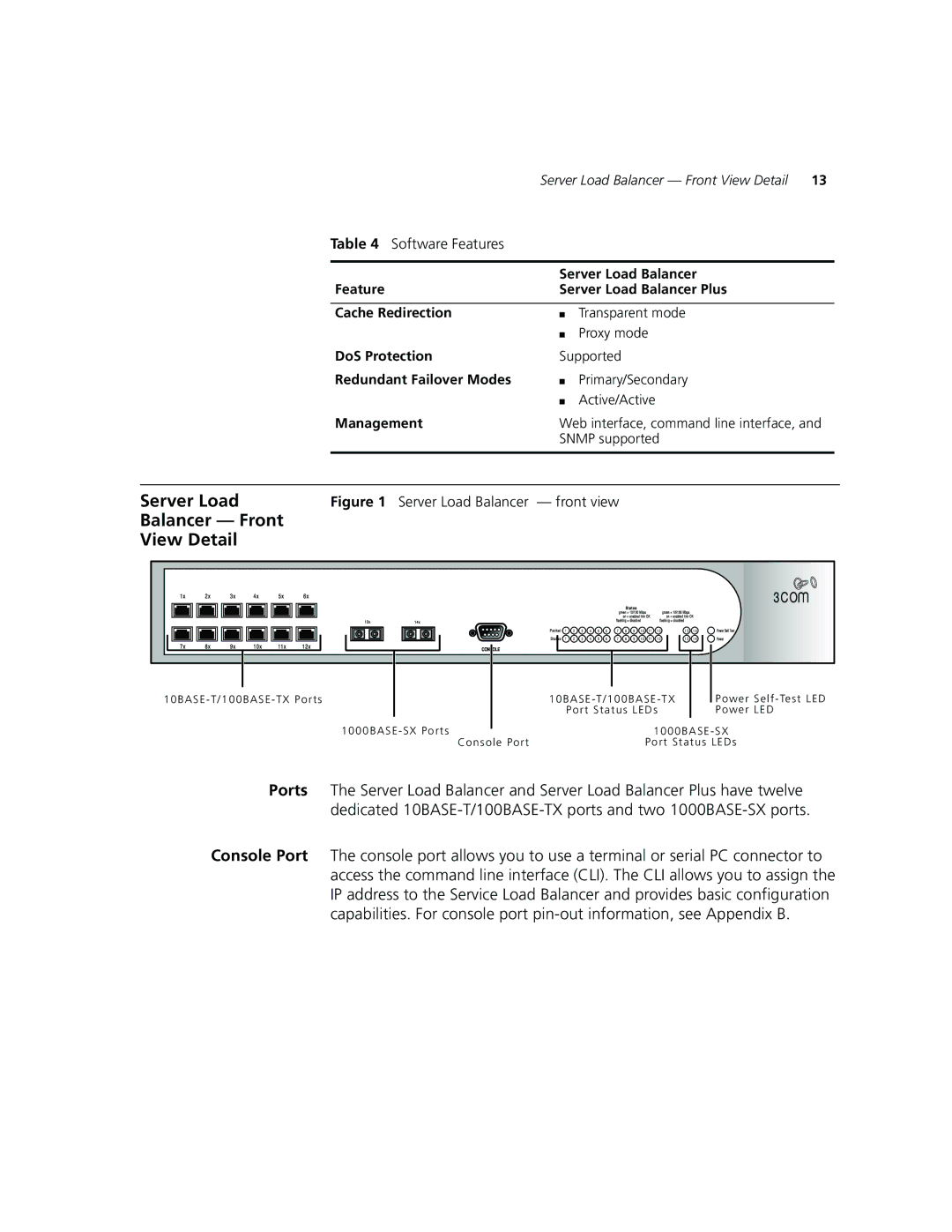
Server Load Balancer — Front View Detail | 13 |
Table 4 Software Features
| Server Load Balancer | |
Feature | Server Load Balancer Plus | |
|
|
|
Cache Redirection | ■ | Transparent mode |
| ■ | Proxy mode |
DoS Protection | Supported | |
Redundant Failover Modes | ■ | Primary/Secondary |
| ■ | Active/Active |
| Management | Web interface, command line interface, and | |
|
| SNMP supported | |
|
|
|
|
|
|
|
|
Server Load | Figure 1 Server Load Balancer | — front view | |
Balancer — Front |
|
|
|
View Detail |
|
|
|
| 1 | 2 | 3 | 4 | 5 | 6 | 7 | 8 | 9 | 10 | 11 | 12 | 13 | 14 |
| 1 | 2 | 3 | 4 | 5 | 6 | 7 | 8 | 9 | 10 | 11 | 12 | 13 | 14 |
10BASE - T/100BASE - TX Ports | 10BASE - T/100BASE - TX |
| Power Self - Test LED | |||||||||||
| Port Status LEDs |
| Power LED | |||||||||||
1000BASE - SX Ports | 1000BASE - SX |
Console Port | Port Status LEDs |
Ports The Server Load Balancer and Server Load Balancer Plus have twelve dedicated
Console Port The console port allows you to use a terminal or serial PC connector to access the command line interface (CLI). The CLI allows you to assign the IP address to the Service Load Balancer and provides basic configuration capabilities. For console port
